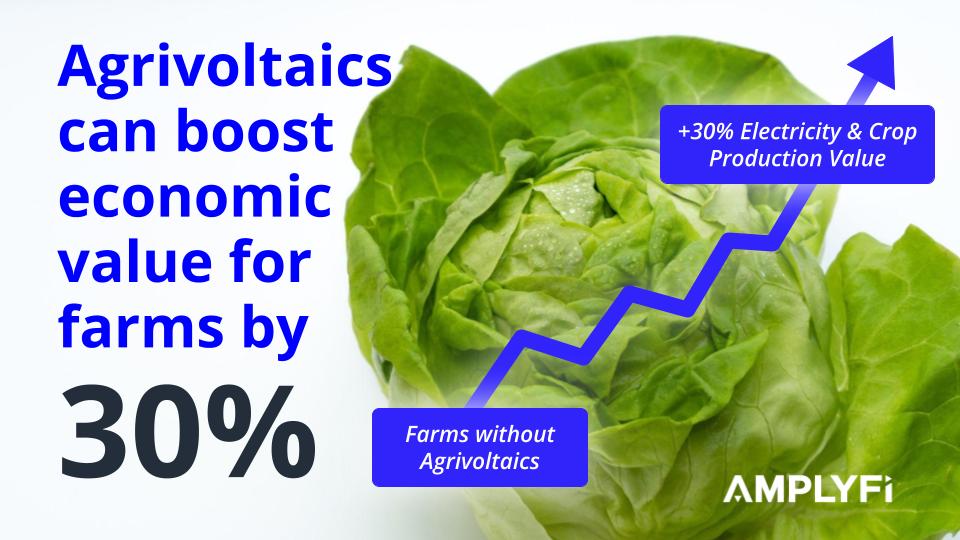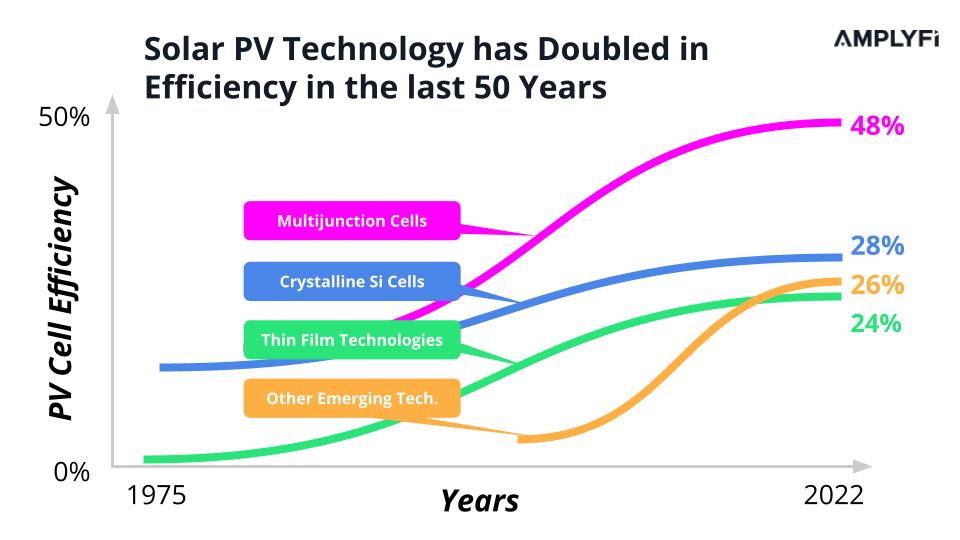
In this blog post, our Machine analyst explores the role of agrivoltaics in farming and the energy sector. Most organisations spend 22% of their time on desk-based research. However, we’ve used our market intelligence tool powered with AI to analyse thousands of unstructured documents and surface previously-hidden trends into how agrivoltaics is transforming agriculture and electricity production.
Agrivoltaics involves the integration of solar panels with crops, creating a dual-use system where solar energy and farming work together. Agrivoltaics systems help combat global food security and environmental concerns, helping reduce water usage as the solar panels provide shade which helps retain soil moisture. Furthermore, the shade provided by solar panels can mitigate the harmful effects of extreme weather events, such as droughts and heat waves. The global agrivoltaics market was valued at $3.6 billion in 2021 and is projected to reach $9.3 billion by 2031, however the market faces technological challenges before it can significantly expand and reach its potential.
The Potential Impact of Agrivoltaics is Huge
The potential for Agrivoltaics to boost the productivity of shade-tolerant crops is high. Studies have shown that agrivoltaics can reduce water consumption by up to 75% and increase crop yield by up to 60%. A 2022 study conducted in China demonstrates that implementing agrivoltaics, specifically by cultivating lettuce under photovoltaic panels, across 854,000 rooftops (covering an area of approximately 105 square kilometres) could result in a lettuce yield of 9.84 × 10^5 tonnes per year and can feed an entire city.
Emerging trends include developing innovative agrivoltaic systems that use sensors and automation to optimise crop growth and energy output. There is also a growing interest in using land for dual-purpose in urban areas and vertical farms. Although dual-use systems may not be suitable for all farms, they hold immense promise for expanding solar capacity. A 2016 Study showed that adopting agrivoltaics for lettuce cultivation alone, across the United States, could contribute an additional 40 to 70 gigawatts (GW) of power. Furthermore, the value of solar electricity combined with an increase in crop production created an over 30% increase in economic value compared to farms with agrivoltaics deployed.

Regulations and Policy
At present, there is a lack of well-established policy regarding agrivoltaics. While there is some support for solar installation such as the federal tax credit and the Rural Energy for America Program (REAP), some state-level policies aim to prevent the conversion of farmland for solar energy generation. However, there is little policy that specifically addresses the practice of agrivoltaics.
One notable exception is the state of Massachusetts, which has included incentives for photovoltaics in its Solar Massachusetts Renewable Target (SMART) program. To qualify for these incentives, farmers are required to maintain as much land as possible for agriculture, emphasizing the importance of preserving farmland for food production alongside renewable energy generation.
However, there is a lack of clear regulatory frameworks for the practice in many countries, for example, Germany, where agrivoltaic systems are not explicitly embedded in the legal frameworks, hindering adoption. As climate change continues to exacerbate droughts and heat waves, the advantages of agrivoltaics in mitigating heat and water stress will become increasingly vital.
Challenges Facing Agrivoltaics
Despite its potential benefits, agrivoltaics still faces several challenges:
- High Costs: One significant obstacle is the installation and maintenance cost, which can be prohibitively high for some farmers. A system built on one hectare of cropland costs $110,000 , an additional $200/kW compared to ground-mounted PV.
- Efficiency: 80% of solar radiation is absorbed by PV cells while a small portion of the radiation is converted into electricity causing the temperature of PV cells to increase and resulting in low performance. Continual research will improve the performance of PV cells and increase the efficiency of agrivoltaics systems, but this creates the risk that early adopters seeing rapid innovation mean their investment does not yield the best returns creating a dynamic where buyers “holding on” for a perfect solution and delay wider adoption.
- Standardisation: The lacking of standardised testing protocols and certifications, makes it difficult to assess the quality and reliability of agrivoltaic systems. This could lead to low-quality PV being deployed, with lower outputs, less reliability and ultimately slowing adoption.
Solar Photovoltaic Cost & Efficiency are the Key Technological Innovations in Agrivoltaics

Researchers in Solar Photovoltaics (Solar PV) are continually driving the development of new technologies that improve the cost-efficiency balance of installations. A key focus for researchers is improving the performance of PV cells which generate electricity and heat while overheating is one of the major reasons for performance reduction and decreased lifespan.
Implementing cooling techniques in PV systems is crucial to mitigate this issue and optimize their efficiency. However, some PV cells are performing better than their counterparts. The figure below indicates that Multijunction PV cells are like solar superheroes with multiple layers working in harmony. Each layer captures a different slice of sunlight, unlocking unprecedented efficiency. These advanced cells have achieved world-record efficiencies exceeding 47.1%, making them an ideal choice for maximizing energy production in agrivoltaics systems while ensuring a harmonious blend of sustainable power generation and agricultural productivity.
Major Agrivoltaic Projects & Investments
There are around 2,000 agrivoltaics projects currently worldwide and currently the world’s largest active agrivoltaics installation is run by the Baofeng Group in the Gobi Desert in China, with a potential 1MW output, covering Goji Berry production in a 107 square kilometre area of farmland. Some notable projects in the Agrivoltaics space include
| Name | Delivery Year | Location | Capacity |
| Baofeng Group | 2020 – active | China – Gobi Desert | 1 MW |
| Israel Govt | 2022 (tender starts) | Isreal – Various | 100 MW |
| Ballenfall | 2023 | Germany – Tützpatz | 76 MW |
| Fintel Energia | 2024 | Serbia | 660 MW |
| Commerz Real | 2025 | Germany – Berlin | 50 MW |
| Enel Group | 2026 | Italy | 170 MW |
In the US, around 15,000 acres (60 square kilometers) of land is currently dedicated to Agrivoltaics, with no projects currently at the scale shown in the table.
In conclusion, Agrivoltaics has the potential to transform sustainable agriculture, offering a solution that maximizes land use and resource efficiency. However, there are challenges to be addressed, such as the cost of installation and maintenance and the potential impact on soil health and biodiversity. With new technologies and policies supporting its adoption, it can play a significant role in achieving a more sustainable future.








